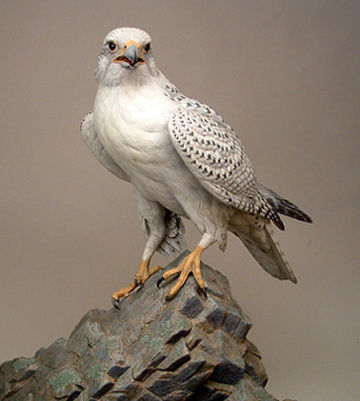270512 gyrfalcon.JPG

Gyrfalcons can spend weeks at sea. Credit: Artist Patrick R. Godin, www.godinart.com
Falcons are among the most majestic creatures on Earth, soaring easily over mountains, forests, and other regions. For one species, the “other regions” include the icy waters around Greenland, where they can spend weeks at a time at sea.
Until recently, all falcons were thought to be strictly land-based. But a study released in 2011 found that gyrfalcons can range far out to sea.
Gyrfalcons are the largest falcons of all, with the larger females growing up to two feet long, with wingspans of up to five-and-a-half feet. They inhabit the cold northern regions of North America, northern Europe, and Greenland.
From 2000 to 2004, scientists tracked about 50 gyrfalcons with radio transmitters and satellites. The birds stayed close to home during the spring and summer breeding and nesting seasons. But in the winter, they migrated as far as Iceland, sometimes covering thousands of miles in just a few weeks. They patrolled hunting grounds that spanned thousands of square miles and included large swaths of open ocean. In fact, the falcons spent up to 40 days over the ocean — the first sustained use of a marine habitat seen in any falcon.
The marine forays are probably a matter of survival — the birds probably have to cover large areas to find enough food during the winter. They use icebergs and pack ice as way stations, hunting seabirds and resting up for their long flights. This “mobile lifestyle,” as the researchers described it, allows the gyrfalcon to survive the cold and dark of an Arctic winter.

